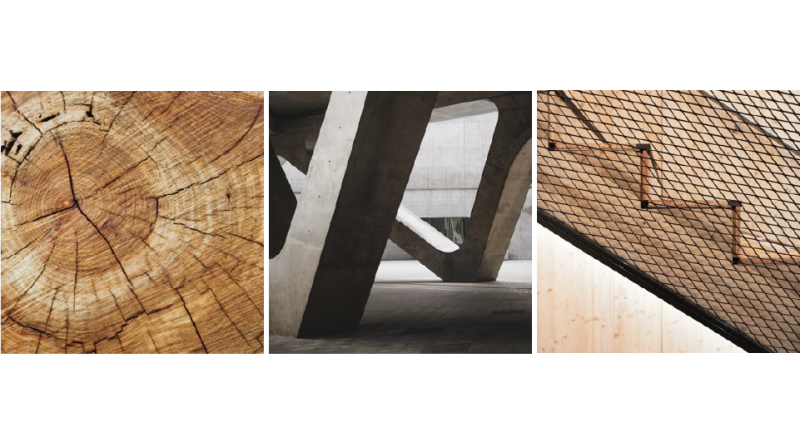There is a role for concrete in sustainable construction; and for mineral products, timber, steel, etc.

We often say “It depends” when we are expected to answer with “yes or no” to a complex question. As with the majority of the choices in life, there is not a “one-fits-all” miracle solution. The same choice might be acceptable in a given context and completely wrong in another: boundary conditions, indirect effects and many other parameters need to be taken into account to provide a meaningful answer.
Construction work (building or infrastructure) is a complex “product”, where the assembly of and interaction between the different components plays a major role. When focusing on the building envelope (or building fabric), architects and designers have a variety of choices to make. Some products or materials have lower emissions at manufacturing but might consume more energy during the use phase and emit even more at end-of-life. Other products may have good performance but need the use of glue or other substances within their manufacture or installation with other products, which hamper their potential re-use or recycling at the end of life. All of them need energy for harvesting or extraction, processing and transportation operations.
Ultimately, only a full assessment of the direct and indirect impact of the whole construction process during its entire life (using a scientific-based method called Life Cycle Assessment – LCA) can help in evaluating the best solution. This solution strongly depends on the expected performance of the structure as well as local conditions, which finally means each project needs to be assessed individually.
Mineral-based construction products (clay, calcium silicate, mortar, autoclaved-aerated and normal concrete) are increasingly confronted with the political promotion of substitution on the belief that the latter is “greener” and more sustainable. This is linked with an over-simplified feeling that bio-sourced is a-priori superior and that carbon emissions are the only environmental impact that matters. Confronted with this situation, natural questions arise: is this a correct assumption? But can we really have a one-size-fits-all solution? What is the scientific background behind it? With these questions in mind, European representatives of the above-mentioned sectors commissioned a study to LBP|Sight and Royal HaskoningDHV (peer reviewed by Norsus) to try and assess the sensibility and fairness of the substitution approach.
The study “Carbon Accounting for Building Materials” (CA4BM) concludes that yes, wood can contribute to reducing carbon emissions in the built environment. This however holds true only in very specific cases, where a full set of conditions is satisfied: no deforestation, the carbon neutrality of managed forests, the processing at end-of-life of a wood product and the consideration of the usually long transportation distances. To achieve the objectives of decarbonisation set out in the Green Deal, the study concluded that there is a need for all construction materials to decarbonise: not only because we need all of them for an effective built environment, but also because all of them require operations which emit carbon in different phases of the building life.
“One material is not enough. We need a variety. Materials must be used in specific places where they make sense,” another expert says. It will be the ability of the respective industries to innovate in response to the societal challenges that will determine the future use of construction products in a sustainable way.
“Our industries need to provide an answer to the climate change challenge, which we are all collectively engaged with; but we should not forget that resource use, biodiversity and water are of the same order of importance”, Alessio Rimoldi, Secretary General of BIBM and project manager of the CA4BM study says. “A building does not only need to be low carbon: it needs to persist and keep its function for as long as possible, provide thermal and acoustic comfort to occupants, a healthy indoor environment and protect people from accidental impacts, like fire or extreme weather events”. Primary and secondary (coming from recycling activities) raw materials for mineral products are locally available, which guarantees short transportation distances and supply chain security.
The study also pointed out the need to have a scientific approach to the assessment of CO2 emissions and to base the results on sound assumptions. Due to the fact that the science behind climate change is newer compared to more established branches (structural safety, thermal behaviour etc…), it is still possible to twist the results by changing the starting point and the assumptions on future developments. Within the CA4BM project, a literature review of studies which conclude that construction with wood is (generally) more sustainable, shows that “All studies assumed carbon emissions from conventional materials to be static, whilst assuming emissions from forest products will decline in the future due to production scale-up and innovation”.
“On the one hand, we are concerned about a decline in the world’s forest areas because of its detrimental effects on climate and other environmental aspects, while on the other hand, an increased use of wood in construction is being promoted as a contribution to climate change mitigation. How can both arguments be valid? If using more wood than we currently do was more sustainable, wouldn’t we first need to grow the extra wood before harvesting it?” says Antonio Caballero Gonzalez, Secretary General of EMO and ECSPA.
European policies should tackle societal challenges by providing the enabling framework: setting the objectives and ensuring fair methodologies to assess their performance. Then, space should be left for actors in the market to have the freedom to innovate and provide solutions that are technically sound and sustainable. Additionally, policy makers should encourage and support all sectors in their decarbonisation path, concentrating on the most emitting phases of each solution.
The CA4BM Project Partners





